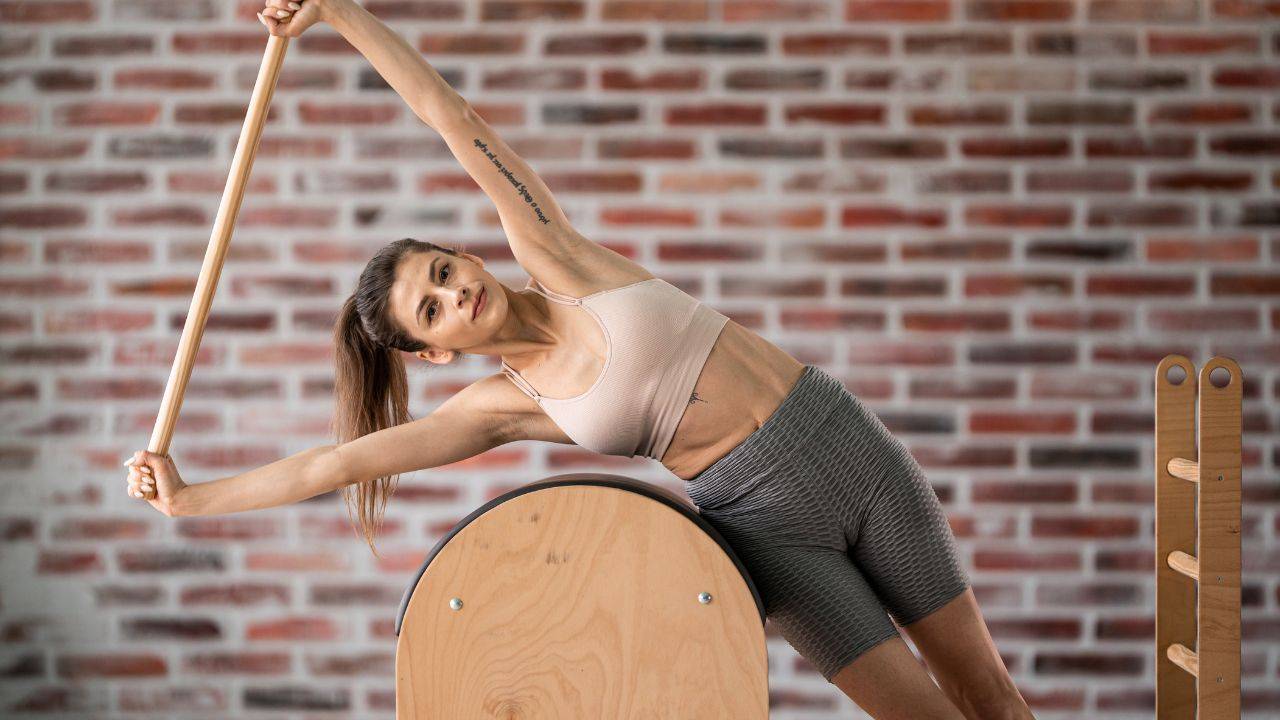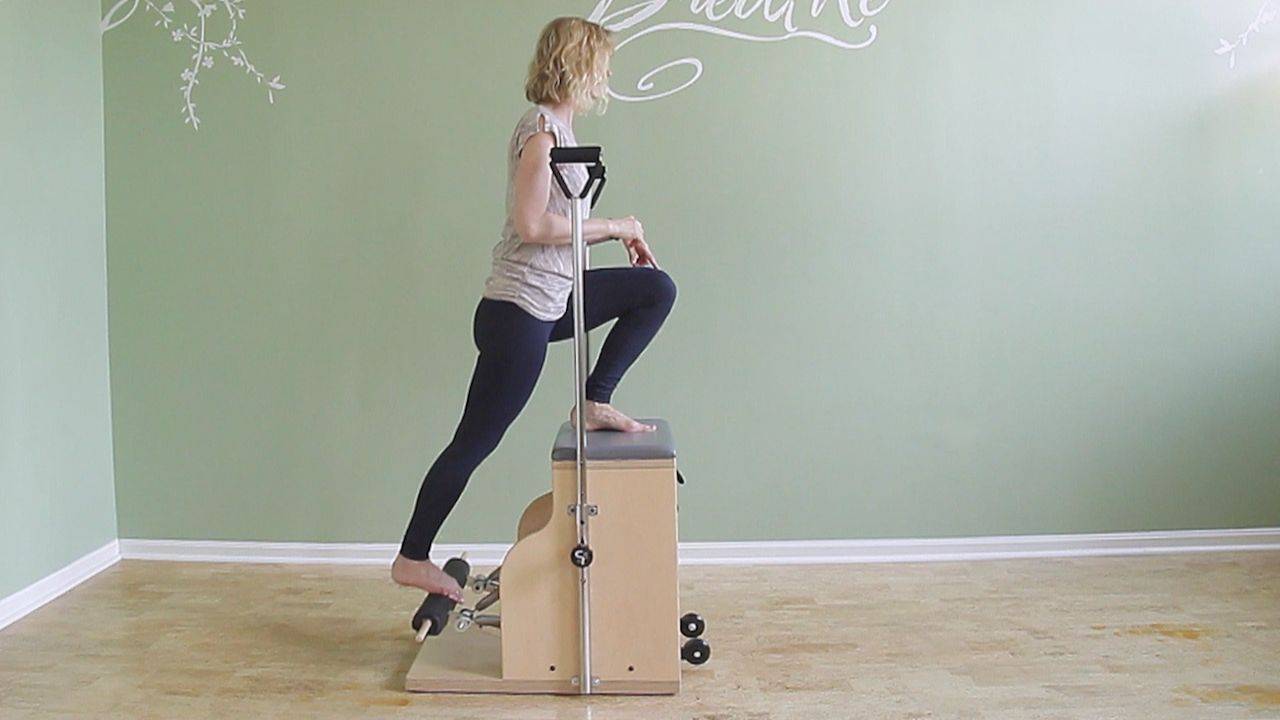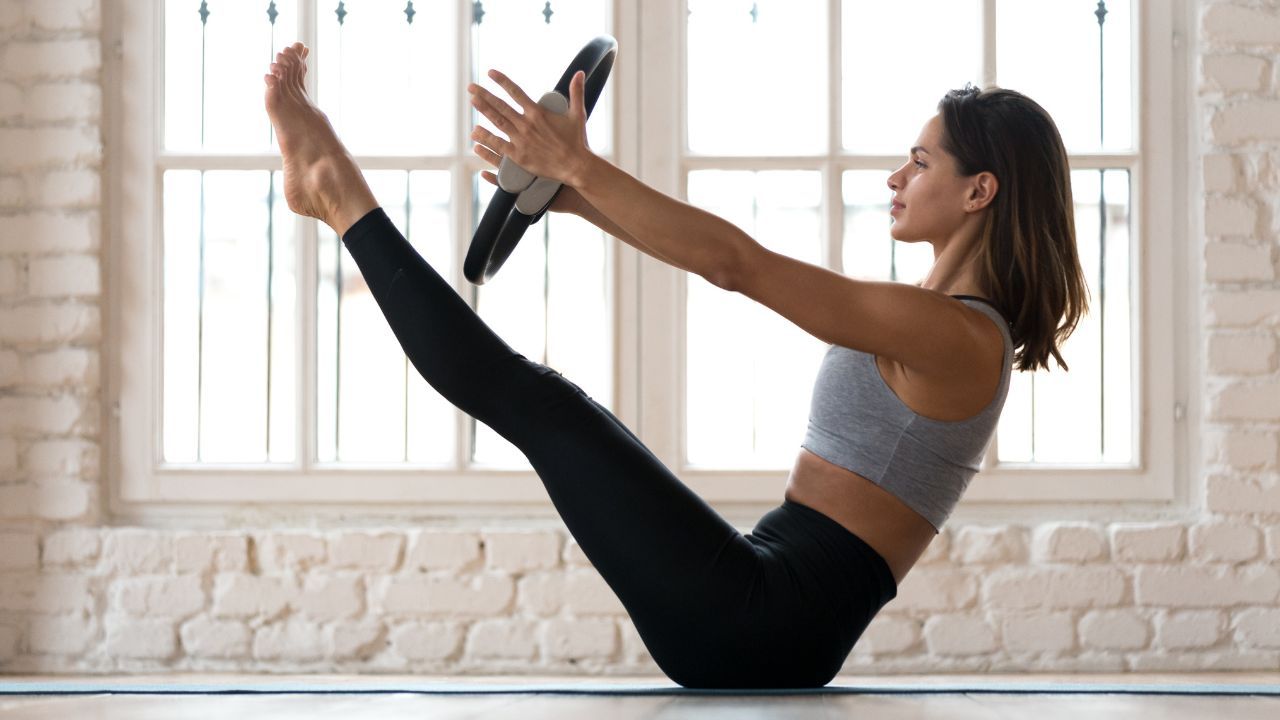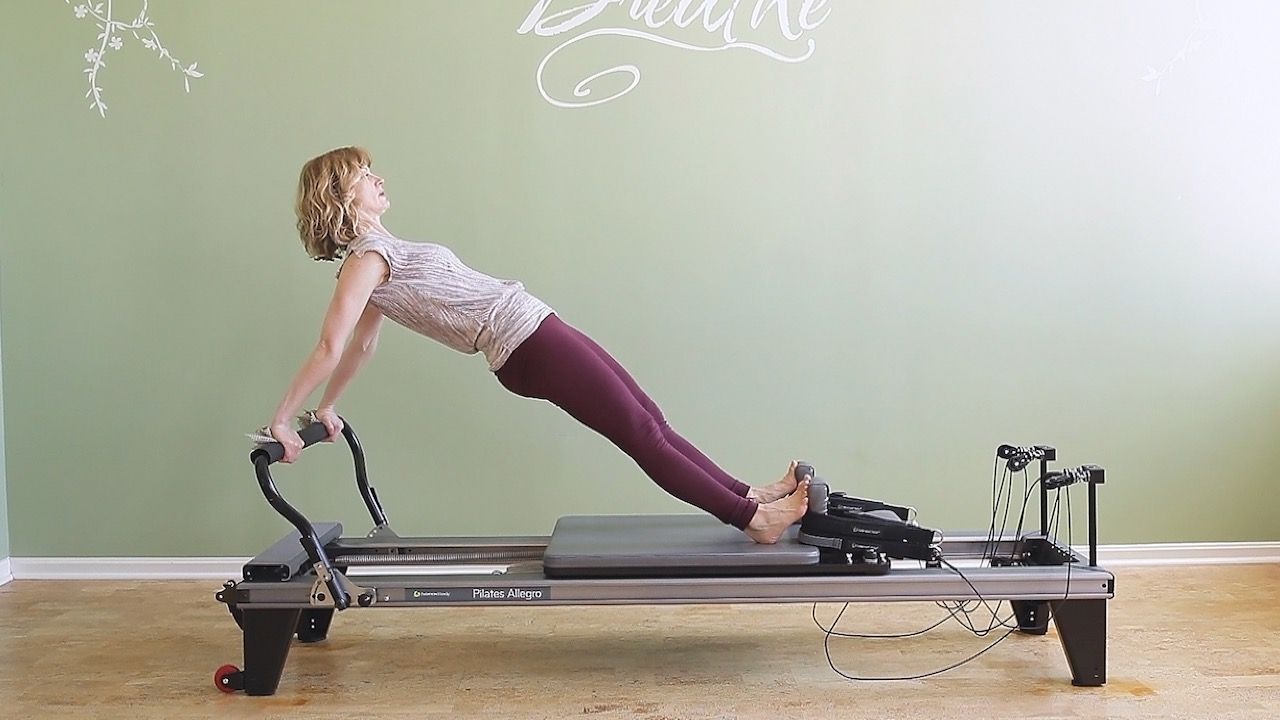How To Cue Eccentric Muscle Contraction in Pilates
May 20, 2019
First, a short recap about concentric and eccentric muscle work. (I’ve stopped calling it contraction because I associate a shortening with the word contraction, which gets confusing as you’ll see.)
Concentric muscle action is a shortening of the muscle while it’s working. You're pulling against resistance. You're lifting a heavy box up off the floor. Eccentric muscle action means the muscle is lengthening under load. You're slowly lowering this heavy box back down to the floor instead of dropping it.
The typical example is your biceps muscle flexing and shortening as you bend your elbow and lengthening while you straighten your arm.

The muscle lengthens while it’s still engaged (you have to resist the pull of the springs). It’s NOT the same as letting go. That would be complete relaxation of the muscle.
In Pilates, we refer to eccentric muscle contraction as resisting the springs on the return. It’s this focus on control over the movement that gave this method its original name Contrology.
This all sounds very theoretical, and for many regular students with no particular interest in anatomy, kinesiology, or biomechanics, it can be a difficult concept to understand. We’re used to putting effort only into the "hard part" of an exercise, such as pushing the carriage out (in Footwork on the Reformer). After that, we mentally check out and stop paying attention until it's time for the next repetition. After all, the springs will pull us back home whether we pay attention or not.
Trying to get a student to effectively strengthen her muscles in the eccentric phase can be challenging. Resisting the return of the movement is a great first step, but did you know that muscles are stronger and more effective in the eccentric phase than the concentric phase?
So it's worth paying much more attention to the eccentric phase of each movement, cue it better so that we can maximize the strength of the muscle.
In that return phase of an exercise, initially, your client might not engage the muscle at all. Then, when you ask them to engage the muscle, they might be confused, because they have never conceptualized a muscle lengthening and working at the same time. Since the springs often help with the eccentric phase, the muscle naturally has to work less. If the muscle is not working as hard, then the student doesn't feel it as much. So they are unsure of what to do.
To help with this dilemma, I started to use this metaphor: Imagine your muscle is the volume button on a radio.
I explained the concentric phase (where the muscle shortens and the intensity increases) as “turning the volume up” and the eccentric muscle contraction (where the muscle gets longer and the sensation becomes less) as “turning the volume down”, which is different from completely turning it off.
As an example, let’s take Seated Pull Down on the Trapeze Table. When you pull the bar down your shoulder muscles (latissimus, lower traps, rhomboids, and rotator cuff) are working concentrically. The muscle belly thickens as it shortens. You’re turning the volume up.
As the bar goes up, those same shoulder muscles that pulled the bar down are now working eccentrically. Many people lose the connection to those muscles quickly. They think they need to use different muscles to lift than to pull down. But really, it's the same muscle group working in both directions. First, they shorten, then they lengthen. Let's keep the music playing. Don't change the channel.
By controlling the bar up with the underarm muscles and moving more slowly, you incorporate that eccentric control that Pilates is all about. It’s like turning the volume down, not off.
When the bar goes down, you turn the volume up.
When the bar goes up, you turn the volume down.
Here is a video describing Seated Pull Down in detail, in case you want a reminder:
Do you want more examples for the eccentric and concentric phase of Pilates exercises? No problem. You'll find them inside the Pilates Encyclopedia library. Get instant access...
Let’s analyze this concept in Standing Leg Pump on the Chair. When you push the pedal down, you can really feel your glute work in a good way. Because it’s concentrically working. When you lift the pedal up, controlling it with the glute of the moving leg, it’s less intense but it’s still working. The glute muscle is eccentrically working meaning the volume gets lower the higher the pedal goes. Just when you feel you’re about to lose the target muscle, reverse direction and push back down. The movement will become a bit smaller as you practice this. You don’t let the pedal lift as high. Limit the range of motion to where you feel the muscles actually working.

One more example would be Feet in Straps on the Reformer: Frogs. When you push away you feel your glute (butt muscle) contracting because it’s concentrically working while you press your feet into the straps. On the way in, make sure to control the speed of the movement so that your glutes are still working (eccentrically). Turn the volume up during the concentric movement (when you push away) and turn the volume down during the eccentric phase.

Related:
Comparing Supine Leg Springs on the Trapeze Table
to Feet in Straps on the Reformer
Now I want to hear from you: How do you cue eccentric contraction in your Pilates classes or sessions. Shoot me an email.










